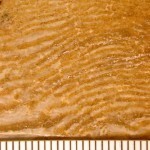We know that the only layer of the Earth to have rocks in its solid state is the Earth's crust. Furthermore, it is also known that this outer layer went through the process of consolidation and solidification of its material about 3.8 billion years ago. However, the rock structure that forms the relief does not have a homogeneous composition, that is, it has numerous variations in terms of shape, color, chemical composition, structure and other aspects. Therefore, to better understand this composition, we carried out the rock classification.
See too: How did the Earth come about? – History of Planet Earth – Geography
If we consider the genesis, that is, the process by which they originated, we can say that there are three types of rocks: the igneous (or magmatic), the metamorphic and the sedimentary.
What are the Rock Types?
Index
- Igneous or magmatic rocks
- metamorphic rocks
- sedimentary rocks
Igneous or magmatic rocks
They are those that originated by the direct solidification of magma, which is nothing more than the rock itself in a liquid state. So, if this solidification occurred inside the Earth's crust, we call it
intrusive or plutonic rocks, like the granite; but if such a process took place on the surface after the eruptions of volcanoes, we call it extrusive or volcanic rocks, like the basalt.



metamorphic rocks
They are those that originated from the metamorphism of a preexisting rock. This is because some rocks undergo changes in their chemical and mineralogical composition as a result of the change in the environment and, consequently, in the temperature and pressure conditions. An example is the granite itself, which, when passing through metamorphism, transforms into gneiss.




sedimentary rocks
They are those that originate from the aggregation of rock particles that have eroded. This is due to the fact that weathering agents (water, wind, climatic variations, etc.) gradually transform the rocks into small particles, called sediments (like the sand on the beach). These sediments can accumulate in several layers and, depending on the conditions of temperature and pressure, aggregate forming a cohesive rock composition, which are sedimentary rocks. An example is the limestone.

It is noteworthy that, due to its genesis, only sedimentary rocks can present fossil remains or traces and also fossil fuels, such as oil, natural gas and mineral coal.
The password has been sent to your email.
